 This article will shed some light on the work of museum conservators. Particularly, we’ll talk about an 8th-century Egyptian tunic exhibited at the V&A. What problems do museum conservators encounter with textile pieces? How do they actually do the conservation? How are vintage clothing articles exhibited and why? These and other questions will be answered here by one of the V&A employees. Also, you’ll get a chance to see beautiful details of this Egyptian tunic.
This article will shed some light on the work of museum conservators. Particularly, we’ll talk about an 8th-century Egyptian tunic exhibited at the V&A. What problems do museum conservators encounter with textile pieces? How do they actually do the conservation? How are vintage clothing articles exhibited and why? These and other questions will be answered here by one of the V&A employees. Also, you’ll get a chance to see beautiful details of this Egyptian tunic.
My name is Elizabeth-Anne Haldane and I'm a Textile Conservator at the Victoria and Albert Museum. I've been working on an Egyptian tunic for the Medieval and Renaissance Galleries. It's dated to around the 8th century.
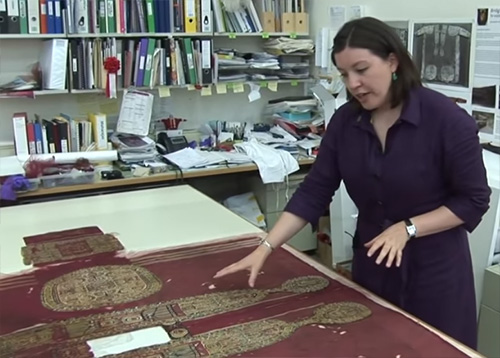
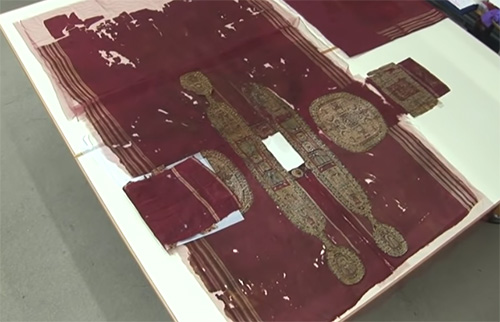
So, the tunic has this beautiful applied tapestry decoration. And at this time in the 8th century, they wove it separately and then they stitched it on.
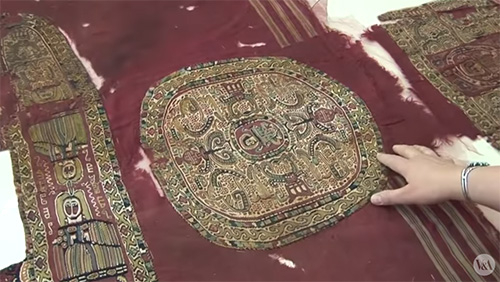
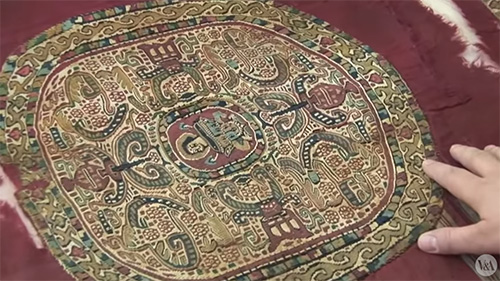
You can see the lovely cream linen stitches where it's applied.
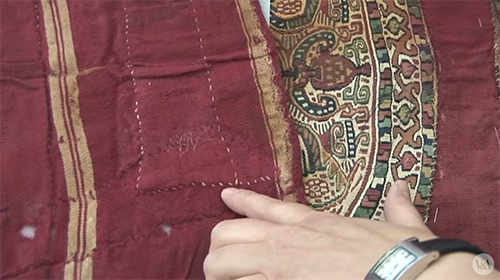
And because there was quite a bit of damage to the back of the tunic through the burial conditions, some of the tapestry decoration was lost. When the museum purchased it, the front of the tunic had two large roundels on it, but there were no roundels on the back. But we know from all the original stitch marks that there should have been roundels there as well.
Once I started examining it closely, it became quite obvious that the roundels on the front of the tunic were actually jigsawed together from lots of different pieces.
So it looks like some of the roundels actually came from the back of the tunic. That was something, I think, that the dealer did to make it much more attractive for sale. So, it looked very nice from the front.
This is a photograph of the tunic before it was conserved. And you can see there's lots of different patches all over the front of the tunic. Some of these patches actually turned out to be pieces of original tunic. I had to take all of these off and then I had to find out where they belonged.
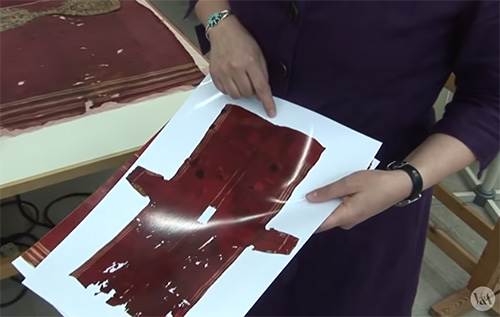
There are several patches that I've been able to replace, so you can actually see that it was quite a bit longer than what we have right now.
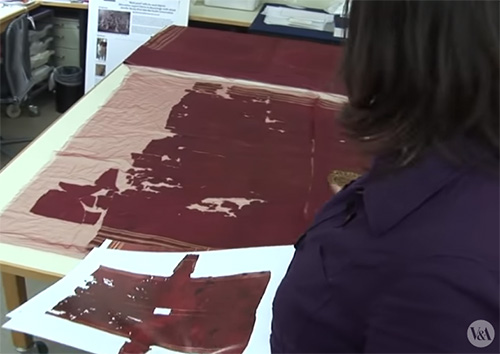
This photograph was taken in 1922 in the museum for publication that year, and it's a really good record of what the tunic looked like.
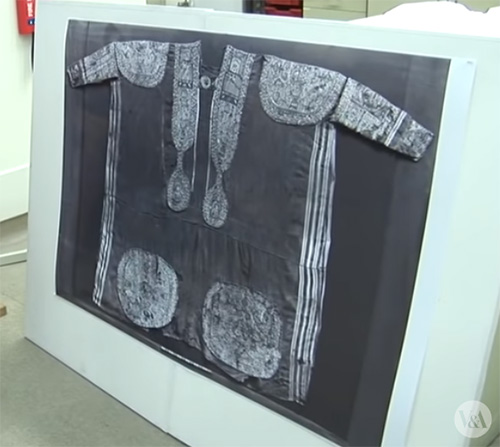
So, we can see the large composite roundels on the front, and they're made from different pieces. And we can also see the stitch lines, so the tuck had been let down at that point. And the arms are actually just folded in to fit in the photograph.
Obviously, the original tunic is quite fragile still. And when it goes on display, it will be in a T-shaped format – a bit like on the photograph. And because that's not how it was worn, we really wanted to show the public how an Egyptian tunic was worn. And so some replicas were commissioned by the Learning and Interpretation Department. Visitors will be able to try these on.
Stuart, who works in that department, is modeling one for us. And you can really see what a difference there is. Like the neck, which looks really small, actually fits really well. And see how beautifully it drapes.
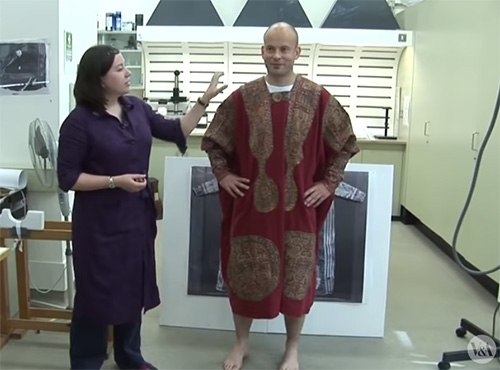
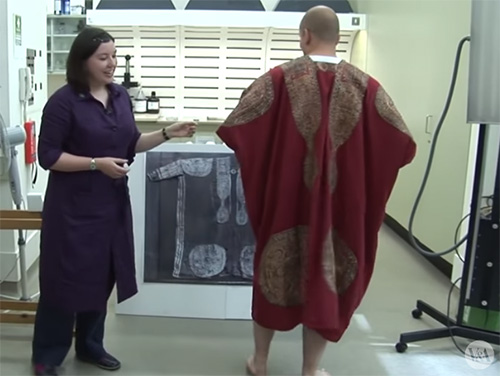
Obviously, it was a bit expensive to reweave tapestry, so what we've done is we've taken photographs and we've had the fabric digitally printed.
The arms are particularly nice because these big roundels are like giant shoulder pads. And then, the actual sleeve here is really tight and snug because that was one of the unusual things about the tunic. The sleeve was really narrow and the shoulder part of the tunic drape over it.
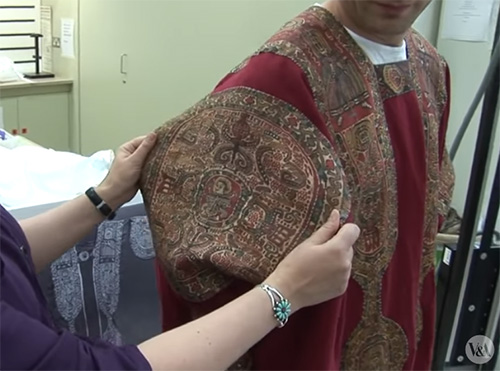
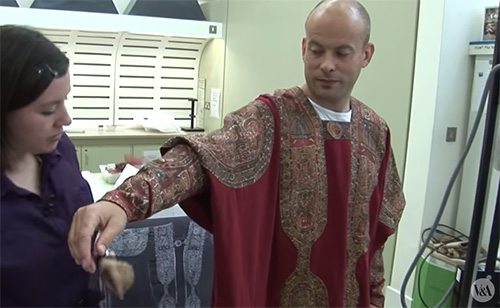
There's a little bit of breathing space underneath the arm. It is open.
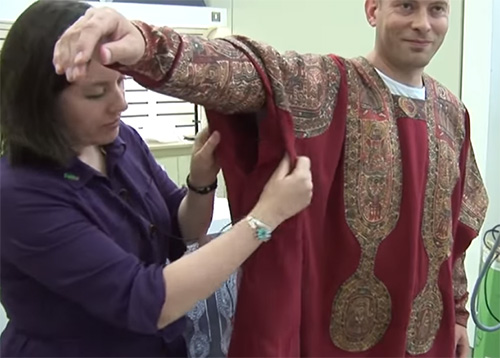
Stuart is not quite tall enough for this tunic because it should go to about the knee. So the original owner was actually quite a large man, quite tall.
When it's actually displayed in the gallery, it will actually look a bit more like this.
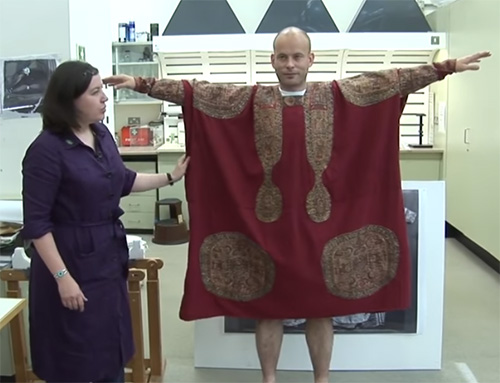
But when you put your arms back down again, you can just see what a difference it makes. But also how many folds there is.
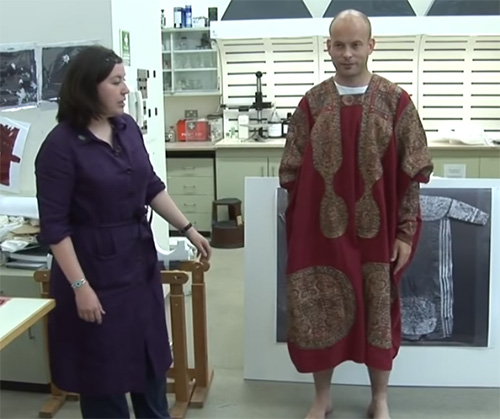
And for a fragile tunic, it would just be too much stress on the actual textile, which is why we have to display it without the folds.
(c)


